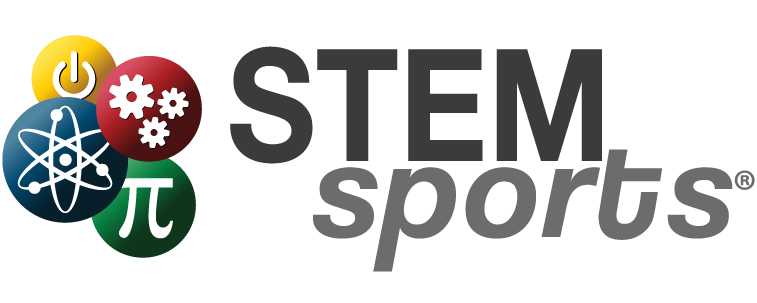Table of Contents
Stretching is key to the body’s performance, safety, and recovery for professional and casual athletes alike. The act of stretching before and after exercise helps the body to properly prepare and recuperate, helping to prevent strains and other injuries.
Like all areas of athletics, there are STEM concepts at play in stretching. The stretches that keep athletes injury-free and able to perform to the best of their abilities can be easily tied to key STEM principles. In this article, we will talk about the science of stretching – a great way for parents and educators to connect STEM learning to sports and real-world scenarios.
Understanding the Biology of Stretching
Stretching positively impacts the muscles, tendons, and ligaments of the human body. By understanding the biology behind stretching, individuals can more effectively focus their stretching efforts. And, once the science of stretching is understood on a deeper level, nobody will ever miss their pre-workout stretch again!
Here are three key elements of the biology of stretching and how the activity impacts muscles, tendons, and ligaments:
- Muscle Elasticity: Through the action of sarcomeres (muscle fibers), muscles stretch and contract. During stretching, sarcomeres elongate and reduce overlap. This lengthening exercise helps to realign the muscles, leaving them ready to effectively move with less of a change for strain or tear.
- Tendon Mechanics: Tendons are the tissue that connect muscle to bone. When stretching is done properly, it can help to keep tendons strong and functioning as needed. But, when stretching is done incorrectly, overstretching occurs, which leads to injury.
- Nervous System Involvement: Muscle reflex, also known as the deep tendon reflex, is an involuntary movement that occurs when a muscle is suddenly stretched. When stretching is done consistently, frequently, and properly, it can reduce muscle tension and increase range of motion, leading to improved athletic performance.
Physics in Action: The Mechanics of Stretching
Science can be found everywhere in the world around us and it plays an active role in our daily lives. When stretching, there are physics concepts at play that, when understood, can help individuals to better understand their body and how stretching impacts it. For example, when doing a hamstring stretch, people lean forward while holding their foot or ankle, there is a rotational force in the hip, which works to deepen the stretch in the hamstring. Another example of how physics impacts the mechanics of stretching is a standing quad stretch, where the knee is pulled to the chest, creating potential energy in the stretching leg. These are two of the many examples of the physics behind stretching, illustrating how STEM can be connected to real-world situations in sports.
Technology’s Role in Stretching and Injury Prevention
Technology is changing the way athletes train and compete. Among the areas positively impacted by technological advances is stretching and injury prevention. Here are some of the innovative technologies that have paved the way for more effective stretching for casual and professional athletes:
- Wearable Technology: Smart wearable technology allows tracking of flexibility, muscle activation, and range of motion. The benefit of wearable technology is that it provides real-time feedback and allows individuals to easily track their progress over time.
- Motion Analysis: There are 3D motion capture machines available that analyze the biomechanics of athletes’ form, helping to improve stretching technique.
- AI and Applications: AI-driven applications have created accessible options for people to have access to personalized exercise and stretching regimens, based on their current skillset and body type. This accessibility allows athletes of all skill levels to continue improving their health.
Engineering Safer Stretching Techniques
Engineers are at the forefront of innovative solutions that enhance daily activities. Through the creation of stretching equipment and spaces, engineers have helped create an environment for individuals to more effectively stretch, keeping their bodies healthy and able to perform. Engineers are responsible for resistance bands, foam rollers, and stretching machines, all of which are frequently used by athletes, physical therapy patients, and those who participate in group fitness classes. They are also active participants in deciding which floors and surfaces are used in training facilities, which helps to protect individuals and joints and bones during training sessions.
The Math Behind Stretching: Measuring Progress and Effectiveness
When stretching, there is a specific time each stretch should be held before moving on. Through the use of math, trainers and athletes can better create and follow their stretching plan, holding each move long enough to ensure an optimal outcome.
Bridging STEM and Stretching for Injury-Free Performance
Stretching is an essential part of sports and is something that deserves focus from athletes and their trainers. As parents and educators looking to creatively implement STEM learning, using sports is an effective way to engage students, improve their comprehension, and connect what they are learning to the real world.
STEM Sports® offers K-8 STEM curricula that uses sports as a way to facilitate STEM lessons. Among the STEM Sports® curricula offerings is the STEM Sports® Stretching and Injury Prevention lesson, which can be purchased on Teaches Pay Teachers for under $5 (pricing is subject to change). During this lesson, children identify warm-ups and stretches to prevent common injuries. Then they describe how forces and extreme angles play a role in common injuries related to sports and exercise. This Common Core State Standards (CCSS) and Next Generation Science Standards (NGSS) lesson is perfect for use at-home, in the classroom, or during an afterschool program.
If you are interested in learning more about STEM Sports®, explore our website.
